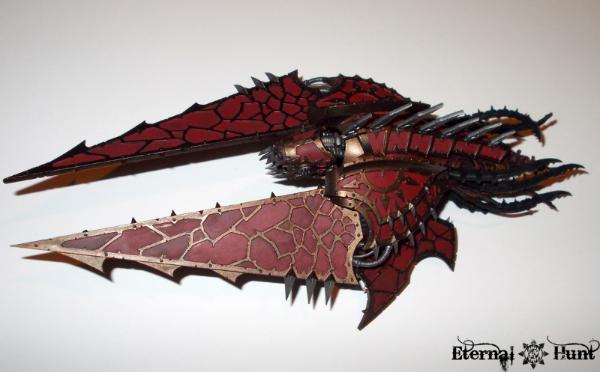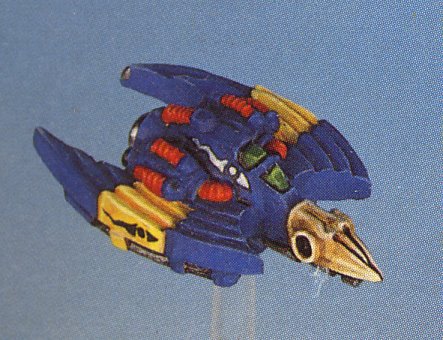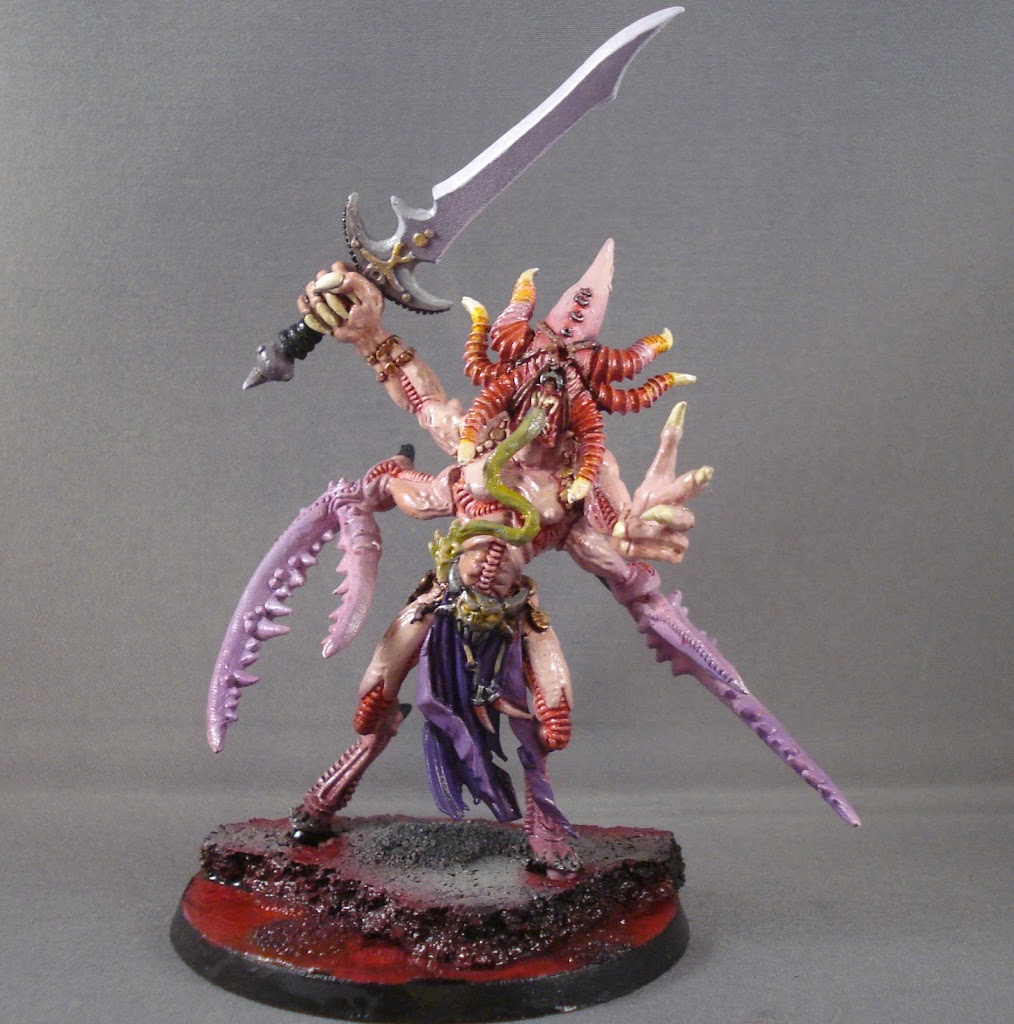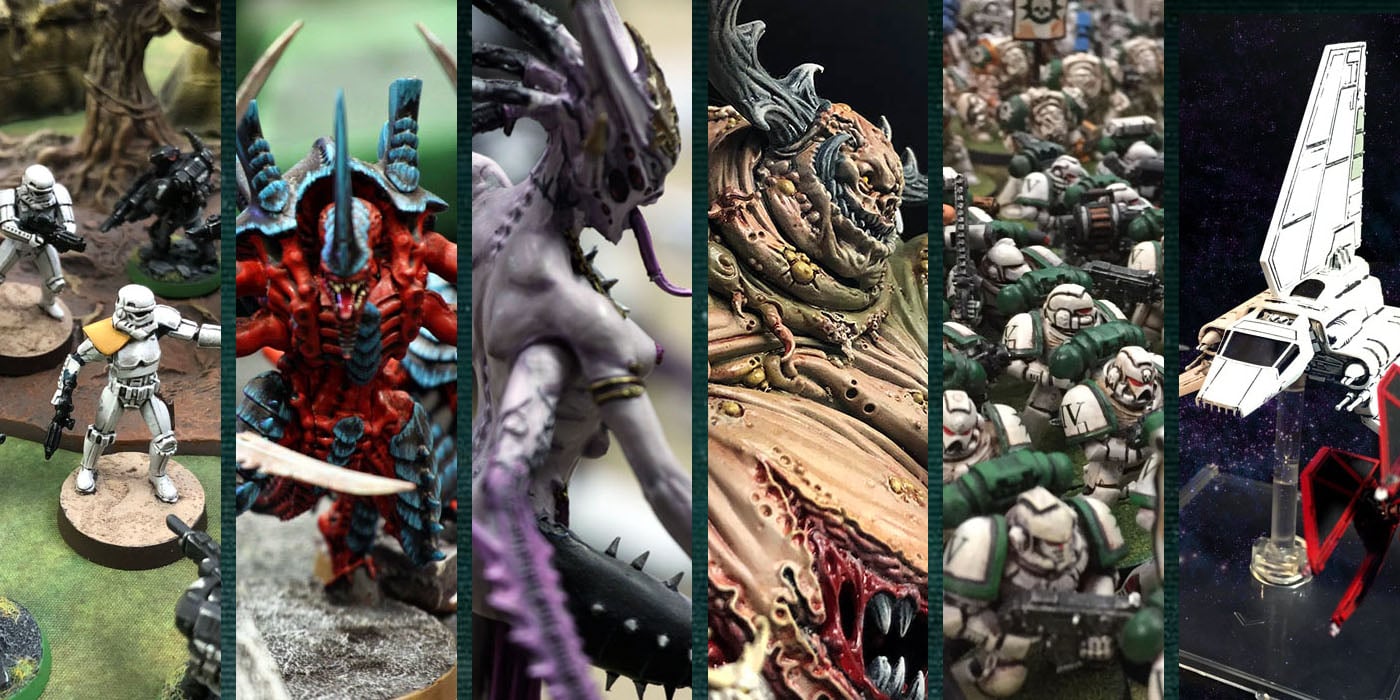Brent’s Daemonic Drivel: The Basics

If excitement on BoLS can be defined as how many posts a new book keeps generating in the first few months of release, than the new Daemons Codex is pretty exciting.
But are we getting this thing right? And by ‘we’ I mean any of us, be it this blog or that forum.
It’s beginning to seem a bit formulaic to me.
This isn’t pointing fingers – or claws – in any one direction, but lately it seems to me that we’re seeing more Theory Hammer out the gate than actual game experience. It’s “This list seems fun!” or “That combo is nasty!” or “Let’s spam this unit!” or “Let’s rate this critter!”
But what’s probably getting to me the most is the compulsion to analyze outside the book before the book has gone even a bit cold.
 |
| Picked up from Dakka, the Khorne’s Eternal Hunt thread… |
Or to put it simply, does every Chaos Daemons army have to include a Flying Turkey or two?
With this in mind, it’s not hard to see how discussion of the Tau book will go. It’ll be something like, “Ally Broadsides with X or Z…” Are the books coming too hard and fast to get a grip on? Is that even a bad thing?
(I’ll leave it at that; rant, ended. Unless you’d like to add a gripe!)
Covering the Basics
I thought for this article it would be useful to swing waaaay back a bit, and just touch on the basic rules governing Daemons. This may be obvious to those of you who own the book… or every book… but every so often busting open the books to work through the rules is just good practice.
The basic rule from the main rulebook provides a Daemon with a 5+ Invulnerable Save and Fear. Note, that’s not Fearless! Reading under the Fear rule:
“At the start of each Fight sub-phase, a unit in base contact with one or more enemy models that cause Fear must take a Leadership test (called a Fear test) before any blows are struck. If the test is passed, (edit) there is no effect. If the test is failed (edit) all models have their Weapon Skill reduced to 1 for the remainder of the fight sub-phase.”
Practically speaking, the Fear causing unit will hit on 3’s and the Fear struck unit will usually require 5’s. Units with a model that has the And They Shall Know No Fear or Fearless special rules won’t have to take the Fear test. Neither will Daemons; the relevant section is under Daemonic Instability:
“Units with this special rule will automatically pass Fear, Pinning, and Morale tests…”
Instead of Morale, a Daemonic unit rolls for Daemonic Instability. A double-1 or double-6 is a special result, either returning or removing all models, respectively, but any other roll is adjusted by any modifiers (usually the amount of wounds the Daemonic unit lost combat by) and can obviously destroy any remaining models.
What’s interesting here is how these wounds are applied. The Daemons Codex states:
“For each point the unit fails its Daemonic Instability by, it suffers one additional Wound, allocated by the unit’s owning player and with no saves of any kind allowed.”
So does this mean, for example, that a player could allocate one wound to each of three remaining Fiends (W=3)? No. The owning player could choose where the initial wound is allocated, but page 25 of the rulebook, last paragraph, states:
“Once a model has a Wound allocated to it, you must continue to allocate wounds to it until it is either removed as a casualty or the Wound pool is empty.”
Easy enough. One Fiend would be removed due to Daemonic Instability. It should be noted this does not mean that a model previously wounded (for example, in the combat itself, or even as a result of Instability from a previous round) would have to be allocated wounds until destroyed. The process ends when “the Wound pool is empty,” providing for a definite start and finish to the Daemonic Instability process.
Daemonic Instability is brutal. Having seen it in action, a bad round of combat combined with a general decrease in the Leadership characteristic of most units can drive a model off the board but quick. Certainly minimum sized, unsupported Troop units can be easy pickings.
Heralds are required reading to support the Horde… and that last word is important! Heralds have a Leadership of 8, so expect to lose models to Instability. Meaning bring more! They’re cheap.
To my mind, all of the Troop types have merit, though I’m partial to Daemonettes myself. Don’t neglect Nurglings! With Infiltrate, a decent sized unit can apply some board control to block an opponent’s lanes of assault. And there’s another Nurgle model that’s the King of Counterattack…
…but that’s enough of that! What’s your take? Feel free to comment on any of the above; disagreement is welcome.
Thoughts? Comments? And so on?







